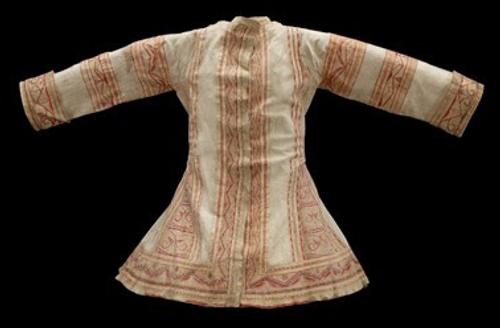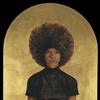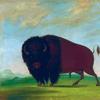Mia To Present First Major Museum Exhibition Exploring the Achievements of Native Women Artists
- MINNEAPOLIS, Minnesota
- /
- July 24, 2018

In June 2019, the Minneapolis Institute of Art (Mia) will present the first major thematic exhibition exploring the artistic achievements of Native women. The exhibition, which will travel nationally, will include more than 115 works dating from ancient times to the present and made in a variety of media, including sculpture, video and digital arts, photography, textiles, and paintings. Drawn from Mia’s permanent collection and loans from more than 30 institutions and private collections, the works are from communities representing all regions of Native North America. "Hearts of Our People: Native Women Artists," presented by the Shakopee Mdewakanton Sioux Community, is organized by Jill Ahlberg Yohe, PhD, associate curator of Native American Art at Mia, and Teri Greeves, an independent curator and member of the Kiowa Nation. An advisory panel including Native women artists and Native and non-Native scholars has provided insights from a range of nations.

“Women have always been central to Native art, though their contributions have largely gone unrecognized,” Ahlberg Yohe said. “This exhibition challenges prevailing assumptions in Native art scholarship, which for the most part has considered women artists to be anonymous. By contrast, ‘Hearts of Our People’ delves into how the works on view are tied to the intricate personal and cultural histories of each individual artist.”
“Hearts of Our People” will help visitors understand the traditional role of Native women artists in serving the cultural, economic, diplomatic, and domestic needs of their communities, while also going beyond the longstanding convention of treating these artworks as unattributed representations of entire cultures. The contemporary works on view, in particular, will highlight the intentionality of the individual artist and demonstrate how the artist has been influenced by the preceding generations.
Mia has commissioned two new works for the exhibition. The first, by master weaver DY Begay (Navajo, b. 1953), is a tapestry made of wool and all-natural dyes depicting the snowy landscape of Northern Minnesota. Drawing upon the Navajo techniques and practices of her ancestors, and employing a traditional Navajo upright loom, Begay has created a stunning contemporary textile that is the first Navajo weaving depicting a Minnesota winterscape.
The second commissioned work, by Tulsa-based artist Anita Fields (Osage, b. 1951), is a contemporary version of a traditional Osage wedding coat. In 1804 Osage leaders visited the White House to meet President Thomas Jefferson and other dignitaries; there, they were given 15 military jackets as gifts of diplomacy. Because these jackets did not fit Osage men, known for their tall stature, they were given to Osage women. The recipients further adorned the epaulets, buttons, and coat with a distinctive Osage aesthetic and wore the jackets for special occasions, including weddings. Fields will make an entire wedding coat from a variety of traditional and contemporary materials, including silk, cotton, wool, ribbon, metal sequins, beadwork, trade bells, hand-made clay or cast metal buttons, satin, hand-made epaulets of gold thread, plumes, and painting. This work is the first wedding coat made with the incorporation of historic photos and paintings that capture important moments in Osage history.
“We are thrilled to present an exhibition that for the first time explores the artistic achievement of Native women,” said Kaywin Feldman, the Nivin and Duncan MacMillan Director and President of the Minneapolis Institute of Art. “The curators’ commitment to understanding and presenting these works with respect for the uniqueness of each artist, as well as for the various traditions from which they come, is an outstanding example of Mia’s commitment to offering deeply thoughtful breakthrough exhibitions.”
Occupying 11,000 square feet of gallery space, “Hearts of Our People” will be organized according to three overarching themes: Legacy, Relationships, and Power. Subsets within these themes will testify to the purposes for which Native women have historically made art—among them, to provide for and protect others, to advance diplomacy, to sell or trade, to pay homage, to assert resiliency, to collaborate, to express beauty, honor, and grace, and to innovate. The themes will enable visitors to note variations in works of art created for similar purposes across time and Native cultures.
• Legacy will examine the ways in which Native women artists acknowledge their lineage, making works that simultaneously embody the experience of previous generations, address the present moment, and speak to the future. One such work is Marie Watt’s monumental blanket sculpture Blanket Stories: Three Sisters, Four Pelts, Sky Woman, Cousin Rose, and All My Relations, 2007, an homage to Haudenosaunee cosmology and her Haudenosaunee relatives. Grounded in materials that are inextricably linked to Native heritage, the sculpture appears to continue the tradition upward, carrying it to a dizzying, ethereal height.
• Relationships will explore the concept that bonds exist beyond the human world to include animals, the weather, the earth, and other entities the Western world does not often attribute with volition and agency. For example, a c. 1750 hunting coat made from caribou hide and pigment by an Innu (Naskapi) artist showcases exquisite stitching and craftsmanship. It was created to be so beautiful that when the caribou saw the hunter wearing it, the animal would be drawn to the coat and could not help but give himself to the hunter.
• Power will encompass works created for diplomacy and influence, to empower others, and for the empowerment of oneself. Included is a screening of The Firebird, danced by America’s first major prima ballerina Maria Tallchief (Osage). Tallchief was a crucial inspiration for choreographer George Balanchine, who staged this ballet for the New York City Ballet in 1949.
Visitors will also gain an appreciation of the various ways in which contemporary Native women artists honor Native women artists of the past and respond to their predecessors’ work. For example, a Pueblo ceramic olla (rounded pot) from the 1940s by the renowned artist Maria Martinez (San Ildefonso Pueblo, 1887–1980) will be presented alongside a 1985 Chevy El Camino, titled Maria (2014), customized in the black-on-black painting style of Martinez by the contemporary artist Rose B. Simpson (Santa Clara Pueblo, b. 1983). The exhibition will be designed by Michael Lapthorn, Mia’s exhibition designer, and incorporate a number of digital elements, artist interviews, and soundscapes to evoke the natural and social contexts in which the works were created.
Ten contemporary artworks will be highlighted in short videos presented throughout the galleries. Each will feature the artist, often within her personal studio, giving background behind the work of art, the artist, her process, and her Nation. The videos will also be available through the ArtStories app, accessible on in-gallery iPads and personal devices.
Each gallery will also incorporate soundscapes and works of poetry and literature on monitors. Highlighted writers include Jane Schoolcraft (Anishinaabe, 1800–1842), the first known Native literary writer, and Zitkala Sa (Yankton Dakota, 1876–1938), as well as works by leading contemporary writers, such as poet Luci Tapahanso (Navajo, b. 1953), Louise and Heid Erdrich (Anishinaabe, b. 1954/1963), and Joy Harjo (Muscogee, b. 1951).
The exhibition’s audio tour will feature the recorded statements, both new and existing, from artists on view. Visitors can listen to a Pueblo artist describe the importance of Nampeyo (Hopi, 1859–1942), the first Native to enter the canon of the dominant culture. Nampeyo, one of the most illustrious Native American artists, drew inspiration from shards of ancient vessels in the Hopi landscape of the Southwest, incorporating her forebears’ designs into clean-lined modern pots that have influenced the work of many younger Hopi potters.
During each step of the curatorial process, the curators have worked closely with an Exhibition Advisory Board, which they established to provide knowledge and insights from a wide range of nations. The panel comprises 22 Native and non-Native scholars from across North America, as well as Native artists, some of whose work will be included in the exhibition and accompanying catalogue. The board first met in November 2015 at Mia, supported by a grant from the National Endowment for the Humanities, for an open discussion that set the tone and clarified intentions for the exhibition. Since then the committee has worked collaboratively to develop the major themes of the exhibition and advise on the objects selected, as well as determine the structure and content of the catalogue, programming, and community outreach activities.
“The Exhibition Advisory Board was an essential part of our curatorial process. Input from our advisors has allowed us to ensure we were making the most informed curatorial decisions possible. Their collective voices will bring greater depth to our audiences’ understandings of this art,” said Teri Greeves, co-curator of the exhibition.
Following its debut at Mia, “Hearts of Our People” will travel to the Frist Museum in Nashville in fall 2019; in early 2020, to the Renwick Gallery at the Smithsonian American Art Museum; and in summer 2020 to the Philbrook Museum of Art in Tulsa. Lending institutions include the National Museum of the American Indian, Smithsonian American Art Museum, Crystal Bridges Museum of American Art, Heard Museum, Brooklyn Museum, Vancouver Art Gallery, National Gallery of Canada, Peabody Essex Museum, and Field Museum of Natural History, among others, as well as private collections.
The exhibition is accompanied by a catalogue, Hearts of Our People: Native Women Artists, a compilation of essays, personal reflections, and poems by 22 members of the Exhibition Advisory Board and other leading scholars and artists in the field. Published by Mia and distributed by the University of Washington Press, it will be available for purchase from The Store at Mia.
















